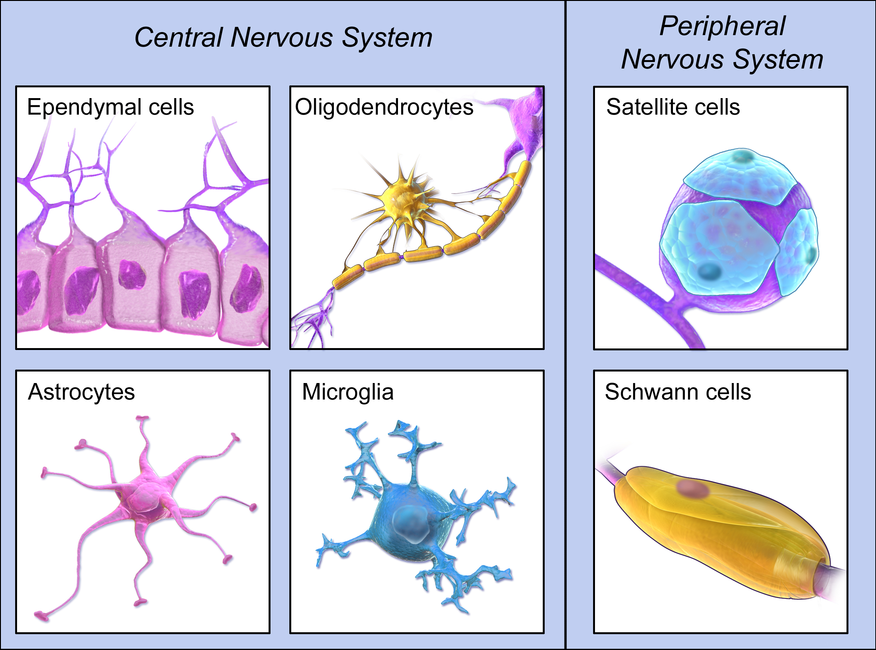Nervous Tissue
Objective 7.13
7.13.1 Describe and identify key features of nervous tissue.
Nervous tissue manipulates information. One group of nerve cells (neurons) receive sensory information from energy in the environment. Another group processes that information; sometimes this information processing can take on an incredibly complex form. The vast majority of the estimated 80 billion neurons in the human nervous system are information processing neurons. Finally, another neuronal group transmits information to muscle or glandular tissues that make up the effector tissues of the body (that is, they produce some sort of output, either the movement of a muscle or the secretion of a gland).
Individual neurons carry out these same three functions: they receive, process, and transmit information.
While neurons may be the star of the show, they need an entourage of supporting cells. These cells are called glial cells, and are literally the glue that holds the nervous system together. We’ll introduce the glial cells here, and study them further in the nervous system.
The following are glial cells in the central nervous system (CNS) (brain and spinal cord):
Astrocytes — These cells are named for their star shape. They are literally a star as they regulate the ion concentration for the neuron, and help form the blood-brain barrier. This barrier protects the central nervous system, regulating what gets in and out.
Oligodendrocytes — These cells produce myelin in the CNS. Myelin is a waxy coating of axons that speeds up the electrical signal.
Ependymal cells — These cells line the ventricles of the brain and the spinal cord. Ependymal cells help produce cerebrospinal fluid (CSF), a fluid that provides cushioning and nutrient support for the CNS.
Microglial cells — These are the defense cells of the central nervous system, protecting the brain from infectious agents.
Glial cells in the peripheral nervous system (PNS), all of the nervous tissue outside of the CNS. There are two different glial cells in the PNS:
Satellite cells — These cells have a similar role to astrocytes in the CNS. They regulate the ion concentration and supply nutrients to surrounding neurons.
Schwann cells — Like oligodendrocytes in the CNS, Schwann cells myelinate nerve axons in the PNS. 
We will discuss glial cells in more depth in the nervous units.
Together, muscle and nerve tissue are called excitable tissues. This is because, by manipulating the flow of electrical charge, they can produce action potentials and other unique electrical events inside the cell.
Media Attributions
- Neuron © User:Dhp1080 is licensed under a CC BY-SA (Attribution ShareAlike) license
- U07-086 glial cells © BruceBlaus is licensed under a CC BY (Attribution) license

